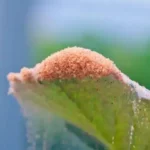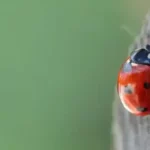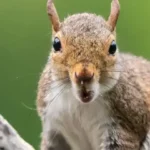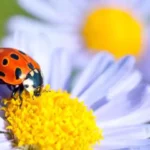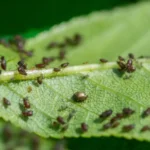As I wandered through my garden, appreciating the beauty of the plants I’ve nurtured, I spotted a lady beetle in flight. Knowing they’re natural helpers against aphids and spider mites, among other insects, I couldn’t help but feel pleased by their presence. However, my relaxing stroll took an unexpected turn when I felt a sharp sting on my feet. Looking down, I saw a swarm of ants crawling around, causing a disturbance among my plants. And this got me thinking: do ladybugs eat ants?
While ladybugs primarily feed on soft-bodied insects, their diet doesn’t typically include ants. Ladybugs eat aphids and other sap-sucking insects, which ants protect due to their sugary secretions. This simple action sparks conflict between ants and ladybugs in the garden.
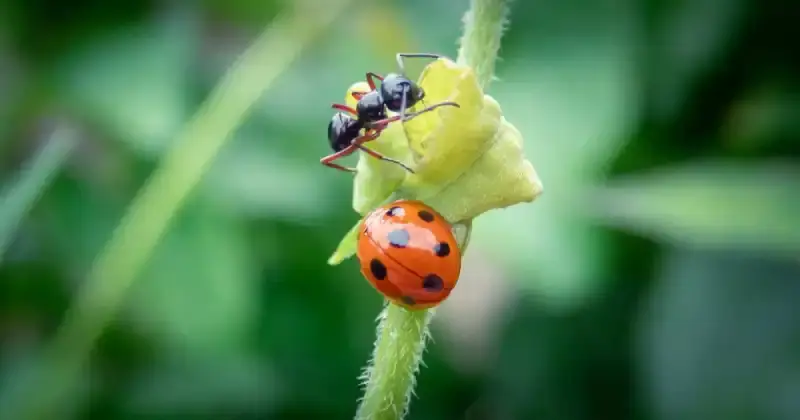
For fellow backyard growers, I understand the struggle to keep pests away from your plants. Fortunately, you can take many natural pest control methods to protect your budding garden. Like other pests, ants can be a hassle in large and small gardens.
If you’re considering ladybugs as a natural solution for ants, this article will help you tremendously. It uncovers a surprising link between these tiny red-speckled bugs that could help you understand how to deal with your ant problems.
Humble Highlights
- Discover how ladybugs act as natural pest controllers in your backyard garden, indirectly influencing ant populations and contributing to a healthier, chemical-free garden environment so you can produce fuller, more abundant harvests!
- Explore the intricate and innovative connection between ants and ladybugs in your garden to understand the inter-relationship each plays in helping balance your garden and surrounding landscape.
- Save time by understanding how certain types of ants CAN cause problems and disrupt the natural balance in your garden so you can take care of the issue quickly and humanely while protecting your veggies!
Ladybugs And Garden Health: Do Ladybugs Feed On Ants
Ladybugs are excellent allies for your garden’s well-being. They do more than add a splash of color and are widely used as natural pest controllers. These little warriors have a big appetite for pests like aphids, spider mites, and small insects, helping to keep your plants healthy. In fact, one ladybug can eat up to 50 aphids in a single day.
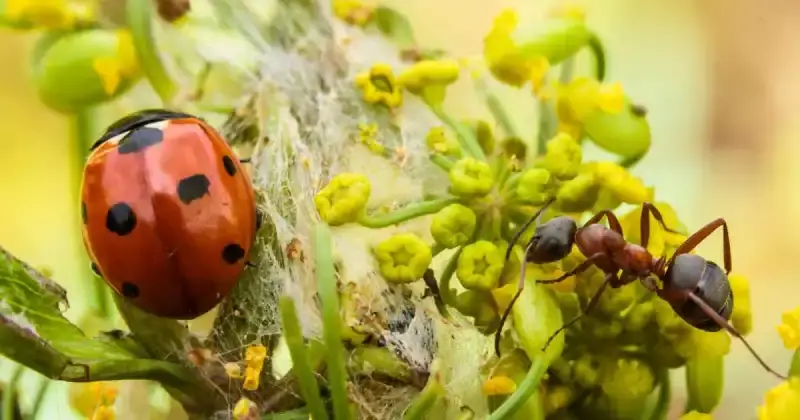
Interestingly, lady beetles also play a role in managing ant populations in the garden. Ladybugs do not eat ants, but when ants gather around aphids for their sweet honeydew, they may intervene by eating these pests, as this affects ants by reducing their food source. Having ladybugs around is like having your tiny garden warriors, promoting and protecting a balanced environment without the need for harmful chemicals. 1
Aside from insects, ladybugs feed on plants too. To invite and keep ladybugs in your garden, consider planting pollen-rich flowers such as marigolds, yarrow, dandelion, and calendula. These blooms add color and beauty and provide food that ladybugs crave, creating a favorable habitat for them to thrive.
Ant vs. Ladybug: When Ants And Ladybugs Meet
Ants, typically considered tiny insects, can surprisingly become significant nuisances in backyard gardens when their population numbers swell. While they might seem harmless initially, addressing their presence before it leads to potential problems is crucial.
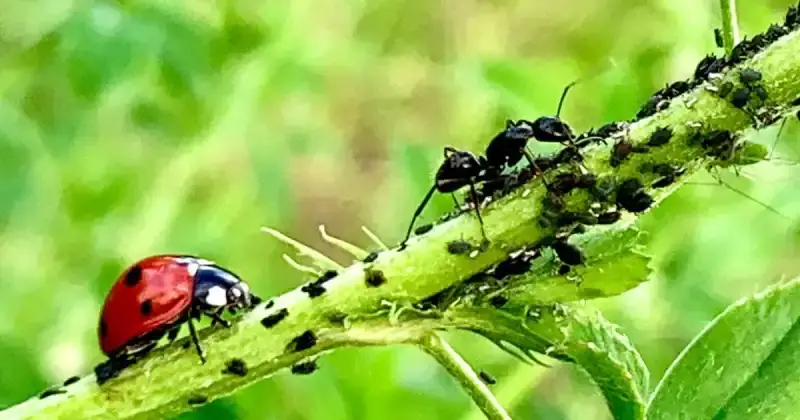
These industrious creatures have a knack for forming extensive colonies that disrupt the garden’s delicate ecosystem. Their activities can interfere with the growth and health of your plants, making it essential to understand when to take action against them.
Spotting The Signs Of Ant Infestations
Ant populations can have subtle yet detrimental impacts on your garden. Recognizing the signs of ant infestations is essential to preserving your garden’s vitality. Keep an eye out for trails of ants traveling to and from plants, which could indicate that they are tending to pests like aphids, which produce honeydew that ants consume. Yellowing leaves, stunted growth, and wilted plants are telltale signs that ants might be causing harm. 2
Additionally, ants can disturb soil and root systems, potentially exposing your plants to diseases and affecting their overall resilience. By being vigilant and understanding these signs, you can take proactive measures to keep ant populations from undermining the health and beauty of your garden.
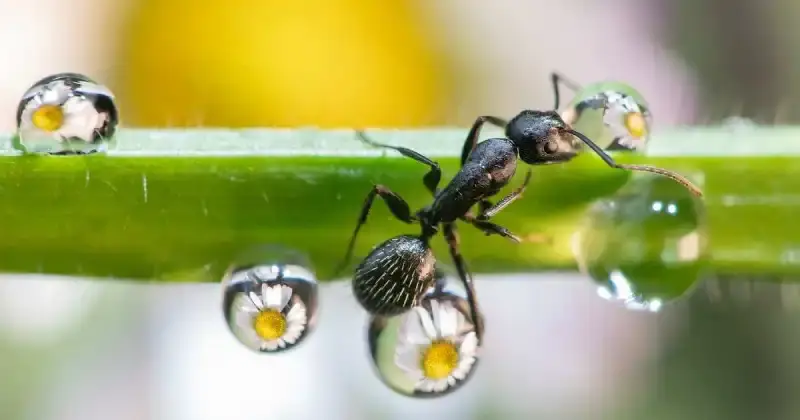
Inviting Ladybugs For Natural Ant Control
Ladybugs feast on aphids, disrupting the ants’ food source and weakening their influence. As the aphid population decreases, ants might be discouraged from sticking around, as they lose their primary motivation for tending to them. This natural pest control approach can be an effective way to tackle ant populations without resorting to damaging chemicals that might disrupt your garden’s overall health. 3
Ladybugs And Ants: Companions Or Competitors In Your Garden
When ants and ladybugs meet, they share a unique and complex relationship that blends companionship and competition within your backyard garden. While the presence of fire ants is problematic due to their stings, most ants can be beneficial in various ecosystems.

Unlike eating plants or flowers, ants work as careful garden helpers. They clean up dead plants and insects and even eat dead ladybugs, acting like natural garden cleaners. They gather this debris and take it to their nests, which keep the garden and soil surface clean. This process also helps the soil by making it airy. When the soil is healthy and well-aerated, plants grow better and produce more leaves, vegetables, and flowers. These plants then provide a habitat and a food source for the ladybugs. 4
Yet, there’s a twist. Ants attack ladybugs and guard aphids because aphids produce a sweet liquid that provides food for the ants. Here’s where the competition part comes in. Ladybugs love to eat the aphids. This competition occasionally happens when ants attack and eat ladybugs, feasting on the aphids they safeguard. So, while ants maintain and keep the garden and soil tidy, their fondness for aphids makes them chase off ladybugs from the garden.
Keeping Ants In Check: Bug Control
Ladybugs don’t eat ants. Instead, ants eat dead ladybugs along with their eggs and larvae. And in some cases, ants attack a ladybug that eats aphids. So, if you’re dealing with an ant problem and looking to take matters into your own hands, here’s a simple DIY approach using borax.

You’ll Need:
- Borax (naturally occurring mineral, also known as sodium tetraborate decahydrate, commonly used for various cleaning, laundry, and DIY purposes due to its cleaning and preserving properties)
- Sugar
- Water
- Containers with lids (like jars or yogurt cups)
- A mixing utensil
- Patience
Steps:
- Mix the Bait: Create a bait mixture by combining borax and sugar in a 1-to-5 ratio. For instance, 1 teaspoon of borax to 5 teaspoons of sugar will suffice. This sweet concoction will help attract ants.
- Add Water: Add a small amount of water to the mixture and stir until it forms a paste. The consistency should be gooey, not too runny. This mixture will be your ant-killing bait.
- Prepare the Traps: Take containers like jars or yogurt cups and drill or punch small holes in the lid, which allows the ants to enter.
- Fill the Traps: Place the borax-sugar paste inside the containers. Make sure the lids are securely on.
- Place the Traps: Position the traps near ant activity areas, like ant hills or where you’ve noticed the most ants. You can also put them near affected plants or areas where you want to control the number of ants.
- Be Patient: Give it some time. Ants will be lured by the sugary scent and return the bait to their nest. The borax in the mixture acts as a slow-acting poison that eventually wipes out the entire ant colony, including the queen.
- Monitor and Replace: Check the traps regularly. If the mixture dries or is consumed, replace it with a fresh batch to keep the bait effective.
Remember, while borax is natural and generally safe when used correctly, it is toxic to pets, causing harmful effects like upset stomach and skin irritation. Hence, it’s best to avoid using it around them. 5
The fantastic video below demonstrates how ants protect aphids from a hungry ladybug due to the aphids’ sugary secretions. Although there isn’t much talking, this video clearly shows the delicate balance and interconnectedness between the humble insects we find in our vegetable gardens and take for granted.
Do Ants Attack And Eat Ladybugs: Ant Species To Watch Out For
Argentine Ants
Argentine ants are opportunistic feeders that cause trouble for gardens and the ecosystem in general. They team up with plant pests like mealybugs, scale insects, and aphids. These pests give the ants sweet honeydew, and, in return, the ants help drive away ladybugs and other predators.
Also, Argentine ants have been observed to move pests to better spots for more honeydew. This cooperation amends any natural way to control pests, making it harder for predators like ladybugs to do their job, leading to more problems and harm to plants within your green space. 6

It’s important to note that these ants aren’t just a bother in cities but can also cause headaches in rural settings and farms. They live together in huge groups with many nests and queens. This arrangement works because they rarely fight among themselves, allowing their numbers to explode. These ants can overwhelm adult ladybugs, their larva, and other garden insects.
Fire Ants
Fire ants are infamous for their painful stings and are not to be taken lightly. These aggressive ants have a fiery sting that can cause discomfort, allergic reactions, and even medical complications for some individuals. These ants make large mounds in the garden, disrupting the soil structure and potentially damaging plant roots.
Their presence can be particularly troublesome during outdoor activities like gardening or simply enjoying your yard. Fire ants eat beneficial insects, upsetting the natural balance you’re aiming for in your garden.
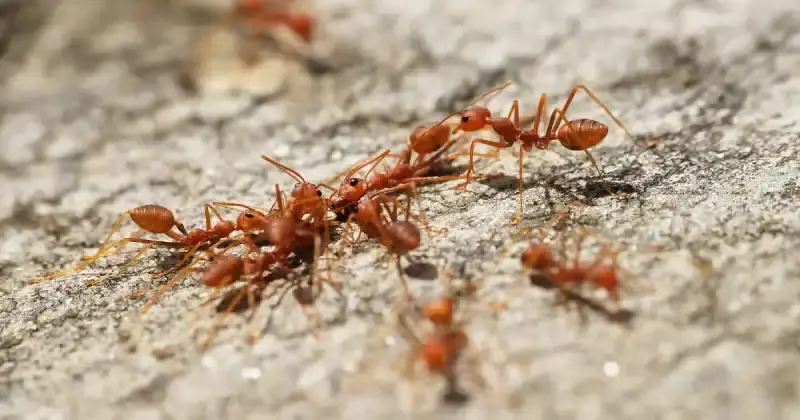
Carpenter Ants
Carpenter ants can be disruptive in gardens due to their nesting habits. They often establish nests in dead or decaying wood, including garden structures like fences, pergolas, and wooden planters. As they excavate galleries within the wood for their nests, they weaken the structures, leading to potential collapse over time. 7
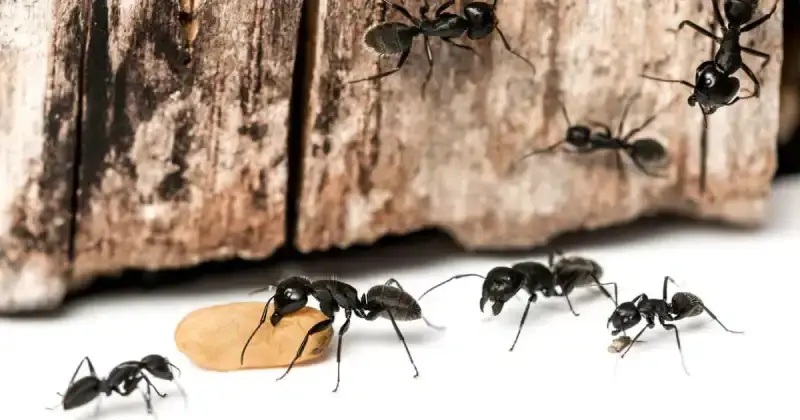
Why Ants Attack Ladybugs And Other Predators
At first glance, ants and aphids might seem like an odd pair. Still, their interactions reveal a unique and mutually beneficial connection that impacts both the microcosm of your garden and the broader ecosystem.

Aphids and mealybugs are known for feeding on plant sap. While this may sound detrimental, these pests also possess a unique ability. They excrete a sugary substance called honeydew and this is where ants come into play. Ants have a sweet tooth for honeydew, and they’ve established an elaborate trade-off. In exchange for protecting aphids and mealybugs from predators and helping them relocate to new feeding sites, ants receive the precious honeydew. 8
The ants that guard aphids will even try to kill the ladybug that eats aphids tended by ants. While ants safeguard aphids from certain predators like ladybugs, this can inadvertently lead to increased aphid populations. As aphids multiply, they continue to feed on plant sap, potentially causing more damage to your garden.
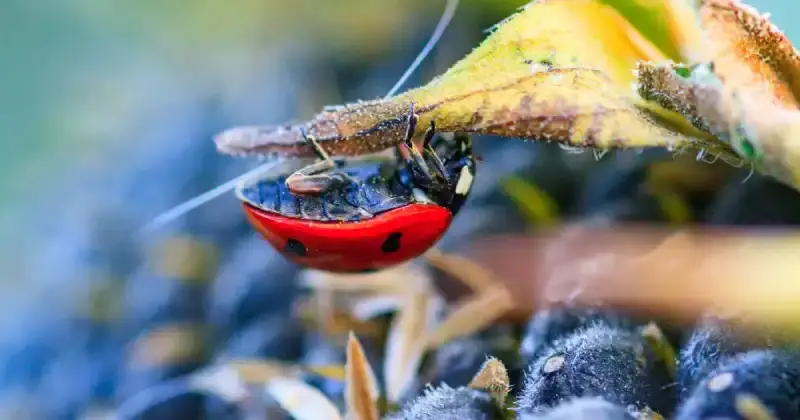
Conclusion
Although often innocuous, ants can become nuisances when they interfere with plants and attract other undesirable insects in your backyard. By recognizing the signs of ant infestations and the potential damages they can cause, you can take proactive steps to maintain a healthy garden environment.
While ladybugs are famous natural predators of aphids and can indirectly affect ant populations, there are other approaches you can use to control harmful ants in your garden.
One of the best methods is to use a borax and sugar mixture as bait to destroy colonies of ants. This natural pest control approach can effectively tackle ant populations without resorting to harmful chemicals that might disrupt your garden’s overall health.
We’d be curious if ants have you crawling for answers in your backyard garden. If so, what techniques have you employed to curb their swelling numbers? Drop us a line in the comments below!
SOURCES
- University Of California, Agriculture And Natural Resources, The Real Dirt Blog – Ladybugs Are Good For Your Garden
- ScienceDirect – The Role Of Chemical Cue Similarity In Interactions Between Ants And Native Versus Non-Native Lady Beetles In North America
- University Of Maryland, Extension – Ladybugs Or Ladybird Beetles
- Springer Link Journal – Interactions Of Ants With Native And Invasive Lady Beetles And The Role Of Chemical Cues In Intraguild Interference
- University Of California, Agriculture & Natural Resources – Pests Of Homes, Structures, People, And Pets: Ants
- Wikipedia – Argentine Ant
- University Of Kentucky, Department Of Entomolgy – Carpenter Ants
- University Of Minnesota, Extension – Ants

